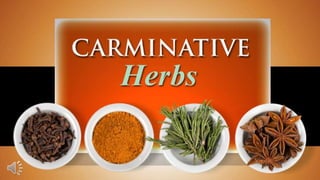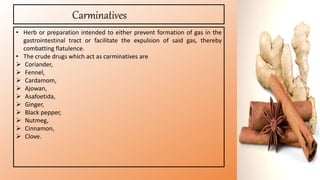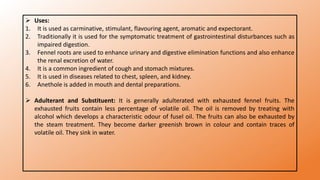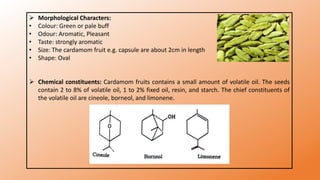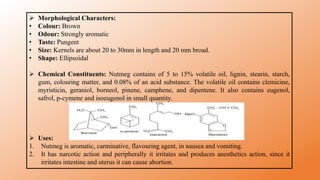The document discusses various carminative herbs and preparations used to alleviate gas and flatulence. It details their biological sources, geographical origins, macroscopic characteristics, chemical constituents, uses, and potential adulterants, covering herbs like coriander, fennel, cardamom, ajowan, asafoetida, ginger, black pepper, nutmeg, cinnamon, and clove. Each herb's specific properties and applications in traditional medicine are also highlighted.
